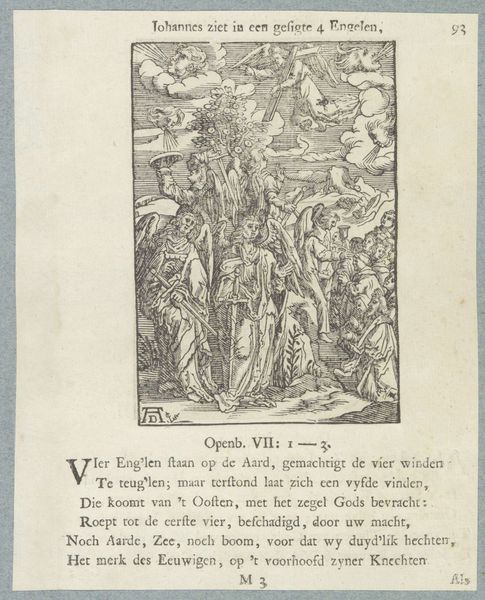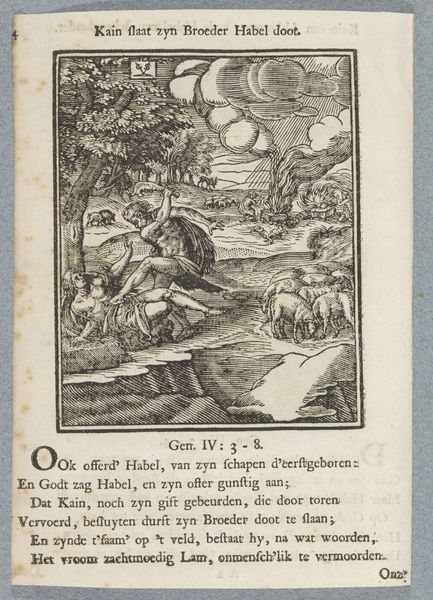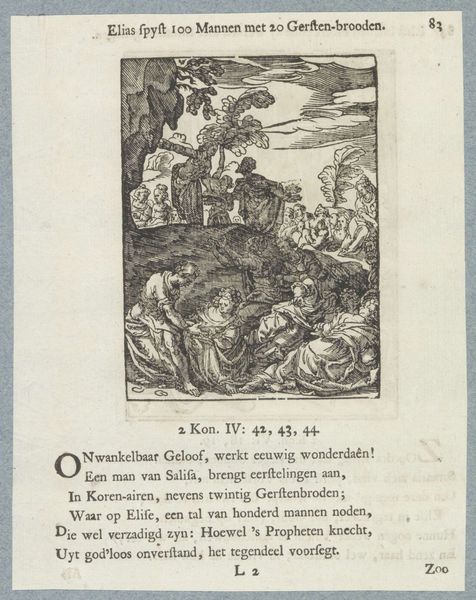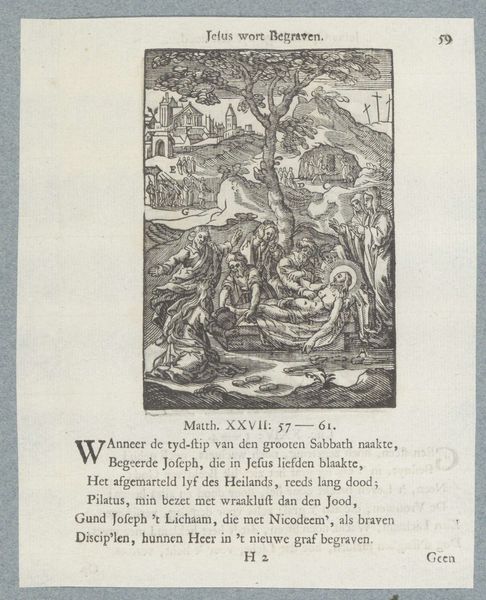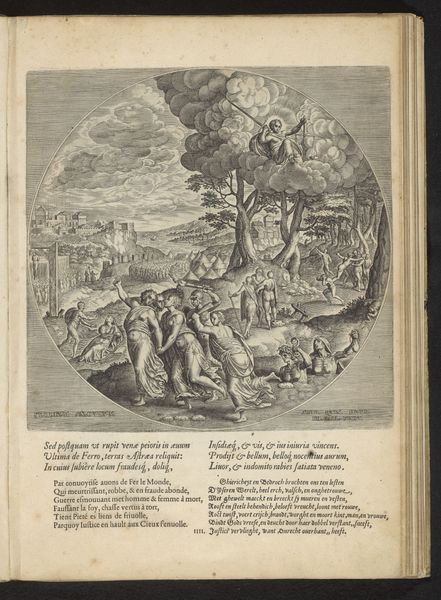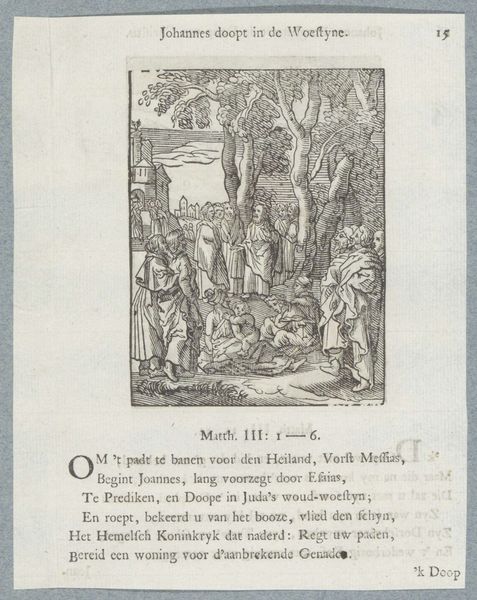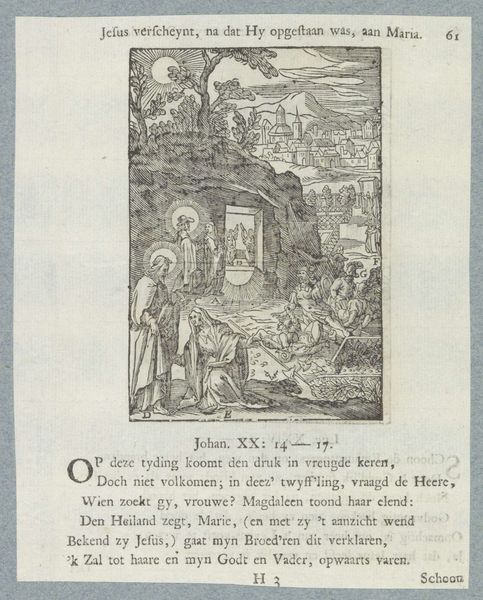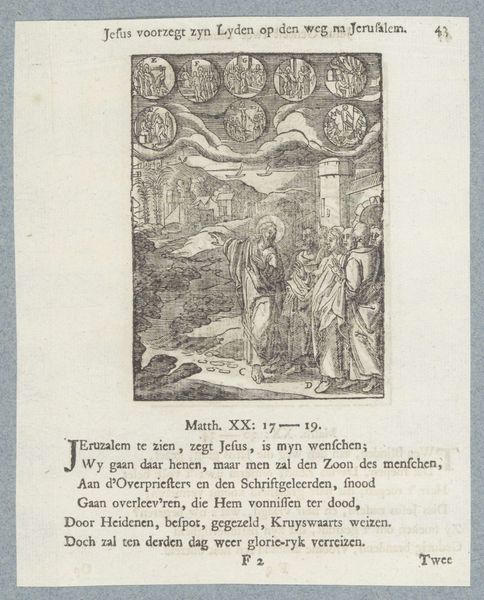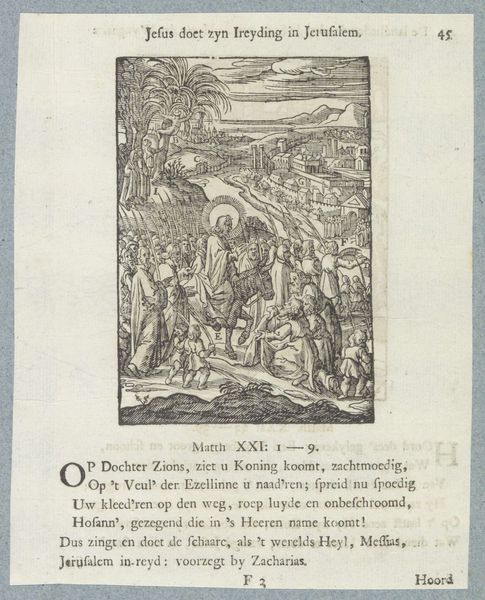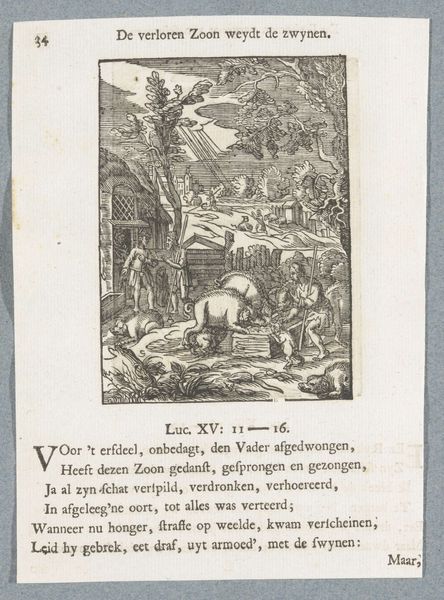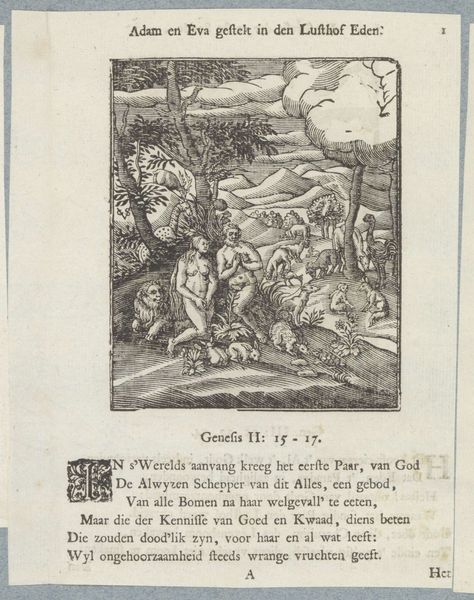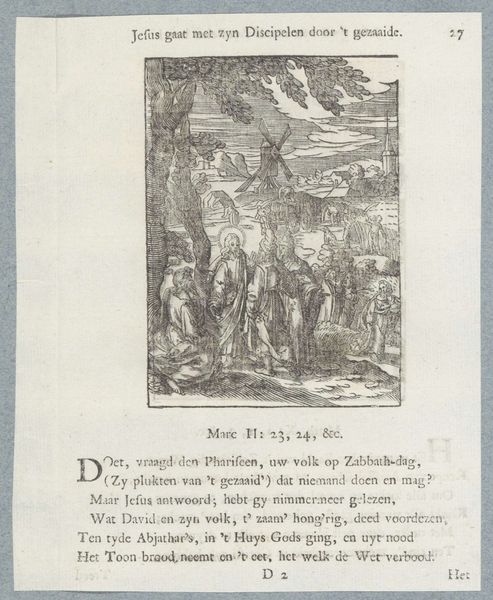
Christus vertelt de parabel van de hebzuchtige boer 1629 - 1740
0:00
0:00
christoffelvaniisichem
Rijksmuseum
print, engraving
#
narrative-art
#
baroque
# print
#
line
#
history-painting
#
engraving
Dimensions: height 101 mm, width 74 mm, height 167 mm, width 137 mm
Copyright: Rijks Museum: Open Domain
Curator: Here we have "Christus vertelt de parabel van de hebzuchtige boer," or "Christ Telling the Parable of the Rich Fool" attributed to Christoffel van (II) Sichem, dating somewhere between 1629 and 1740. It’s an engraving. Editor: Woah, it’s a dense little scene! My first impression is of a kind of manic energy. Like a story unfolding at triple speed. All those tiny lines just buzzing! Curator: The composition certainly contributes to that feeling. Note the sharp contrast between the figures on the right, clustered around Christ, and the frenetic activity of building and hoarding on the left. We are situated in the Dutch Baroque tradition, where such moralizing allegories were particularly popular. It's rooted in Luke 12:16-20. Editor: Allegories, right! Makes me think about our relationship with material wealth, then and now. I wonder if van Sichem ever felt the pull of, you know, needing more storage space for his etchings! On another note, there’s an innocent looking dog here near what I imagine is the barn, and he looks almost as if he disapproves the entire affair. Curator: The placement of that dog is brilliant. The image critiques unchecked accumulation, reflecting on social and ethical questions about wealth and poverty in 17th-century Netherlands. We also ought to see the building itself not just as material accumulation, but also a visual symbol of social injustice when it’s rooted in the oppression of others. Editor: Exactly, it’s almost like the chickens and other animals being forced to find somewhere else to live as this barn takes over their habitat. The body language from Jesus is extremely powerful as well! Curator: Indeed, the expressions are key. This isn’t merely about religious instruction but about prompting social reflection and potential change. What does ethical life look like and how can society embody it? Editor: And isn't it incredible how much depth van Sichem manages to create with what's really just a series of very thin lines! I have gained a far better understanding about its historical meaning after seeing your take on it. Curator: Ultimately, it is an invitation to ponder how we orient ourselves toward the pursuit of ‘more,’ both individually and as a society. What system makes us continue to value "more" over all else, and at the detriment to other lives?
Comments
No comments
Be the first to comment and join the conversation on the ultimate creative platform.
